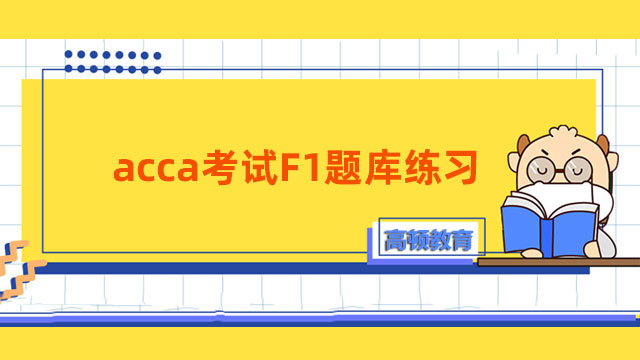真题演练:2011年6月ACCA考试F7考试真题答案(3)
小编特收集了ACCA考试历年真题,希望对您参加本次考试有所帮助!


(b) Note: references to 2011 and 2010 refer to the periods ending 31 March 2011 and 2010 respectively.
It is understandable that the shareholder’s observations would cause concern. A large increase in sales revenue has not led to a proportionate increase in profit. To assess why this has happened requires consideration of several factors that could potentially explain the results. Perhaps the most obvious would be that the company has increased its sales by discounting prices (cutting profit margins). Interpreting the ratios in the appendix rules out this possible explanation as the gross profit margin has in fact increased in 2011 (up from 40% to 42%). Another potential cause of the disappointing profit could be overheads (distribution costs and administrative expenses) getting out of control, perhaps due to higher advertising costs or more generous incentives to sales staff. Again, when these expenses are expressed as a percentage of sales, this does not explain the disparity in profit as the ratio has remained at approximately 19%. What is evident is that there has been a very large increase in finance costs which is illustrated by the interest cover deteriorating from 36 times to only 9 times. The other‘culprit’ is the taxation expense: expressed as a percentage of pre-tax accounting profit, the effective rate of tax has gone from 28·6% in 2010 to 42·9% in 2011. There are a number of factors that can affect a period’s effective tax rate (including under-or over-provisions from the previous year), but judging from the figures involved, it would seem likely that either there was a material adjustment from an under-provision of tax in 2010 or there has been a considerable increase in the rate levied by the taxation authority.
As an illustration of the effect, if the same effective tax rate in 2010 had applied in 2011, the after-tax profit would have been $3,749,000 (5,250 x (100% – 28·6%) rounded) and, using this figure, the percentage increase in profit would be 50% ((3,749 – 2,500)/2,500 x 100) which is slightly higher than the percentage increase in revenue. Thus an increase in the tax rate and increases in finance costs due to much higher borrowings more than account for the disappointing profit commented upon by the concerned shareholder.
The other significant observation in comparing 2011 with 2010 is that the company has almost certainty acquired another business. The increased expenditure on property, plant and equipment of $6,740,000 and the newly acquired intangibles (probably goodwill) of $6·2 million are not likely to be attributable to organic or internal growth. Indeed the decrease in the bank balance of $4·2 million and the issue of $7 million loan notes closely match the increase in non-current assets. This implies that the acquisition has been financed by cash resources (which the company looks to have been building up) and issuing debt (no equity was issued). This in turn explains the dramatic increase in the gearing ratio (and the consequent fall in interest cover) and the fall in the current ratio (due to the use of cash resources for the business purchase). Although the current ratio at 1·5:1 is on the low side of acceptability, it does include $2 million of non-current assets held for sale. A better comparison with 2010 is the current ratio at 1·2:1 which excludes the non-current assets held for sale. It may be that these assets were part of the acquisition of the new business and are ‘surplus to requirements’, hence they have been made available for sale. They are likely to be valued at their ‘fair value less cost to sell’ and the prospect of their sale should be highly probable (normally within one year). That said, if the assets are not sold in the near future, it would call into question the acceptability of the company’s current ratio which may cause short-term liquidity problems.
The overall performance of Bengal has deteriorated (as measured by its ROCE) from 38·9% to 31·9%. This is mainly due to a lower rate of net asset turnover (down from 1·9 to 1·4 times), however when the turnover of property, plant and equipment is considered (down from 3·2 to 2·7 times) the asset utilisation position is not as bad as it first looks, in effect it is the presence of the acquired intangibles that is mostly responsible for the fall.
Further, it may be that the new business was acquired part way through the year and thus the returns from this element may be greater next year when a full period’s profits will be reported. It may also be that the integration of the new business requires time (and expense) before it delivers its full potential. In summary, although reported performance has deteriorated, it may be that future results will benefit from the current year’s investment and show considerable improvement. Perhaps some equity should have been issued to lower the company’s gearing (and finance costs) and if the dividend of $750,000 had been suspended for a year there would be a better liquid position.

【整理版】ACCA各科目历年真题
真题高频考点,刷题全靠这份资料
acca全科学习思维导图
梳理核心考点,一图看懂全部章节
2023年acca考纲解析
覆盖科目重难点,备考按照计划走
- acca考试怎么搭配科目?
-
建议优先选择相关联的科目进行搭配报考,这样可以提高备考效率,减轻备考压力,1、F1-F4:为随时机考科目,难度较低,这里可以自行随意选择考试顺序。2、F5-F9:如果你的工作的和财务会计或者审计有关、或者你比较擅长财务和审计的话,推荐先考F7和F8。你可以选择一起考ACCA考试科目F7和F8或者先考F7(8)再考F8(7),这就要取决你一次想考几门。3、P阶段:选修科目中,建议企业首选AFM!第二部分科目进行选择,如果AA和SBR掌握学生更好,可以通过选择AAA,如果SBL掌握的好,可以自己选择APM。
- acca一共几门几年考完?
-
acca一共有15门考试科目,其中有必修科目和选修科目,考生需要考完13门科目才能拿下证书。
- acca一年考几次?
-
acca一年有4次考试,分别是3月、6月、9月和12月,分季机考科目是采取的这类四个考季的模式,而随时机考则是没有这方面的时间规定限制,可以随报随考。
- acca的含金量如何?
-
ACCA证书的含金量是比较高的,从就业、能力提升、全球认可等角度来说,都是比较有优势的证书,其含金量主要表现在以下几个方面:1、国际化,认可度高;2、岗位多,就业前景好;3、缺口大,人才激励。
-
acca考试F1题库练习,考生必备! 2023-03-20
-
acca2022真题下载流程介绍,必做考前模考题! 2023-02-24
-
ACCA试卷出题形式?ACCA考试最快多久能通过? 2021-07-24
-
ACCA官方样题 F4(ENG) F8 2021-01-07
-
ACCA考试P1-P3模拟题及解析9 2021-01-07
-
四大会计事务所2017年终精华会评(中) 2018-02-01
-
2016年ACCA F1模拟练习题及答案 2016-02-29
-
2016年ACCA F8每日一练:Professional ethics 2016-01-26
-
2016ACCA考试F8自测题:Corporate governance 2016-01-26
-
关于ACCA考试P7中的专业和道德问题 2015-11-24
-
ACCA P5精选模拟题之战略性绩效考核 2015-10-10
-
ACCA F9模拟测试题之投资评估 2015-10-10
-
ACCA P3精选练习题之战略管理和组织变革 2015-10-10
-
2014年ACCA《公司法与商法》真题及答案七 2015-07-20
-
2014年ACCA《公司法与商法》真题及答案七 2015-07-20
-
2014年ACCA《公司法与商法》真题及答案六 2015-07-20
-
2014年ACCA《公司法与商法》真题及答案五 2015-07-20
-
2014年ACCA《公司法与商法》真题及答案四 2015-07-20
-
2014年ACCA《公司法与商法》真题及答案三 2015-07-20
-
2014年ACCA《公司法与商法》真题及答案二 2015-07-20
-
2014年ACCA《公司法与商法》真题及答案一 2015-07-20
-
2014年ACCA《公司法与商法》真题及答案八 2015-07-20
-
2015年ACCA考试模拟题 2015-06-26
-
2015年ACCA考试精选测试题汇总 2015-06-19
-
2015年ACCA考试《财务成本管理》模拟题汇总 2015-06-18
-
2015年ACCA考试F8模拟试题:Financial Management 2015-06-18
-
ACCA考试2015年《财务成本管理》模拟练习汇总 2015-04-27
-
ACCA考试2015年《财务成本管理》模拟练习5 2015-04-27
-
ACCA考试2015年《财务成本管理》模拟练习4 2015-04-27
 更多服务
更多服务

















